
3 Mar, 2024
Thai PM leads “Peace Through Tourism” visit to South Thailand
Bangkok – “When the people have money in their pockets, they will forget about their conflicts.” That simple rationale summarised the core objective of Thai Prime Minister Srettha Thavisin’s historic “Peace Through Tourism” visit to the kingdom’s southernmost provinces of Pattani, Yala and Narathiwat between 27-29 February.
Under the slogan “Travel to the South — With All Your Heart”, the PM covered Islamic mosques, Chinese shrines and Buddhist temples, local museums and markets, tucked into the local culture and cuisine, and enjoyed indigenous music and dance performances in a series of whirlwind stops designed to promote multi-cultural co-existence, move beyond years of local ethnic strife and focus on the economic benefits of making the Muslim-majority provinces a real geographical bridgehead between North and South ASEAN.
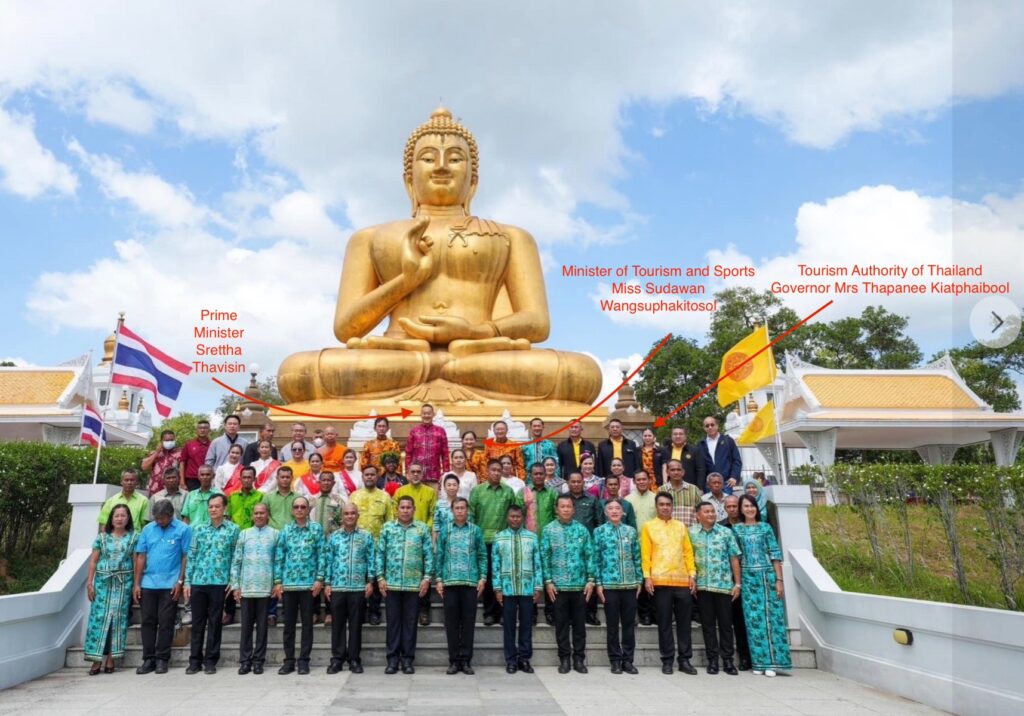
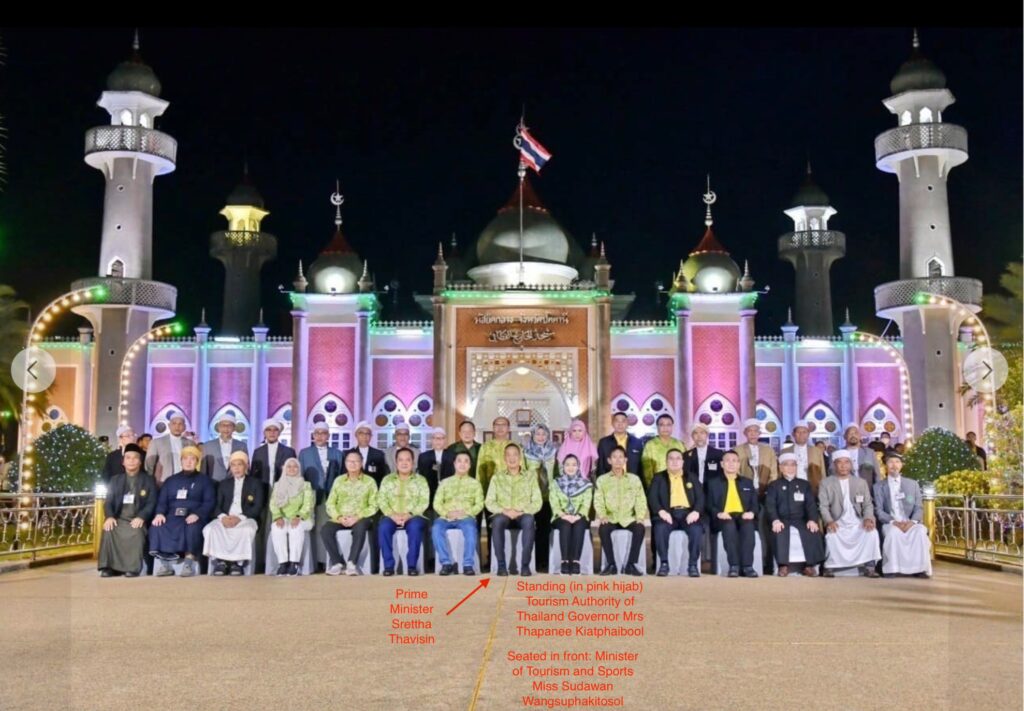
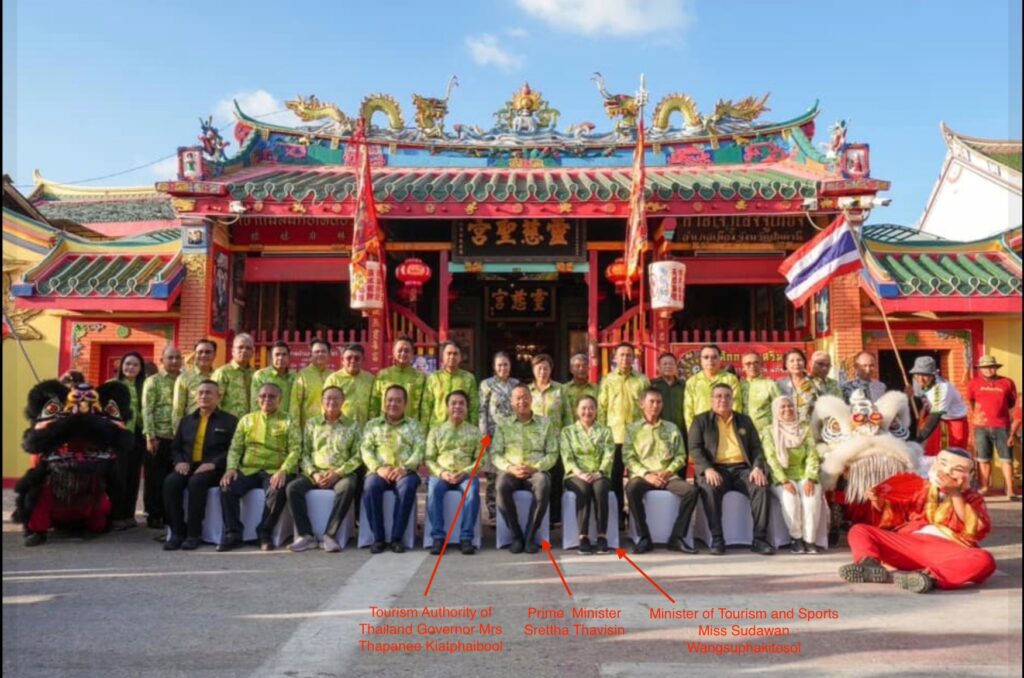
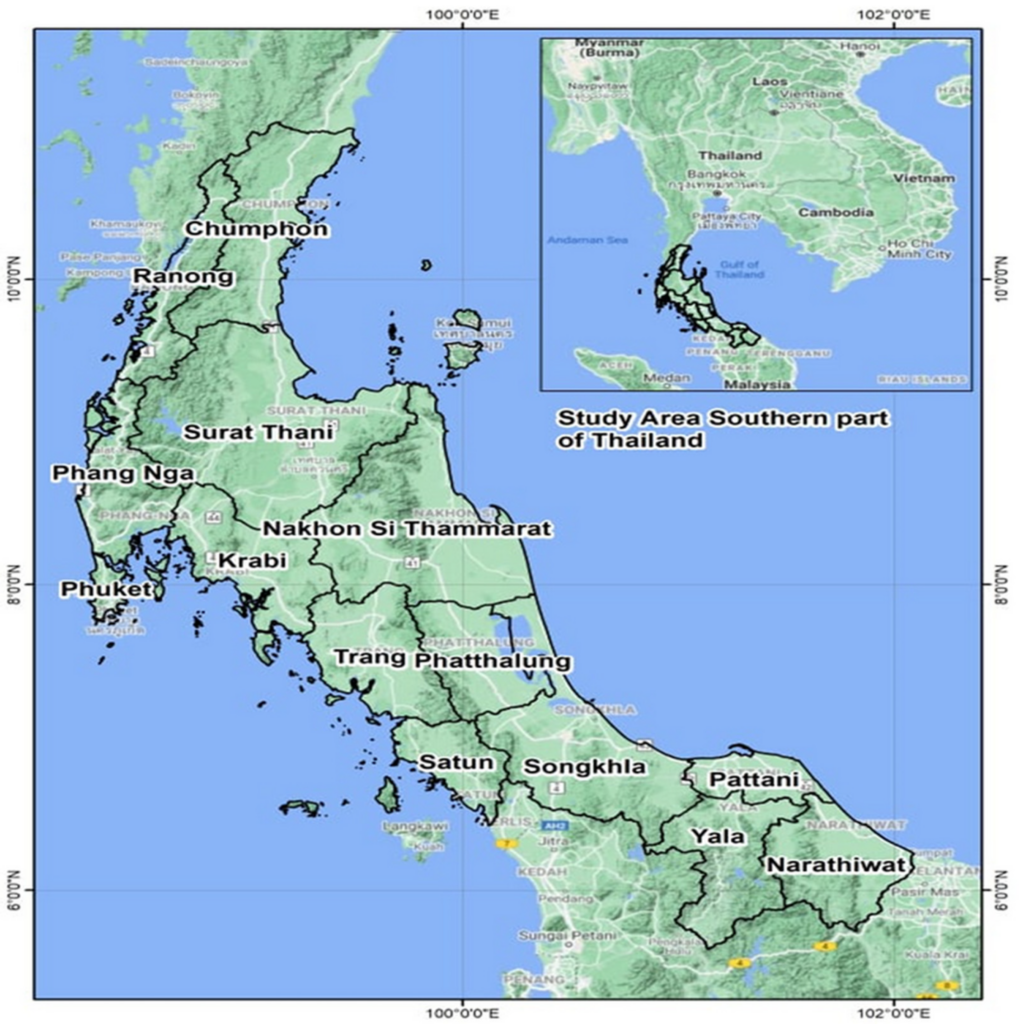
Map of Southern Thailand showing the provinces of Yala, Narathiwat and Pattani in the extreme south
He bolstered the status of Thailand as the world’s first “Alliance of Civilisations Destination” (my designation) and fulfilled a core promise of his policy statement to Parliament after taking office last September 2023: “Thailand will play a leading role in promoting world peace and common global benefits, and manage geopolitical situations appropriately.” A few days later, he reiterated that pursuit of peace in his speech to the UN General Assembly in New York.
Signalling a clear shift in the Thai government’s policy away from heavy-handed suppression, the visit was in line with the country’s desire to raise its international standing and promote Thai “soft power” via “proactive economic diplomacy.” It also raised the definition of sustainability to a new level, communicating to the travel & tourism industry in Thailand and worldwide that building peace and harmony is far more important than recycling plastic and reducing food waste.
In era of ceaseless geopolitical and economic turmoil, the Thai leader showed that “P” for Peace must be prioritised over Planet, People, Prosperity and Partnerships. In that order, Profitability is a foregone conclusion.
The Prime Minister was accompanied by the Minister of Tourism and Sports Miss Sudawan Wangsuphakitosol, Tourism Authority of Thailand Governor Mrs Thapanee Kiatphaibool, Transport Minister Mr. Suriya Juangroongruangkit, Justice Minister Police Col Thawee Sodsong, Minister of Culture Mr. Sermsak Phongpanich and Deputy Minister of Interior Mr. Kriang Kaltinan.
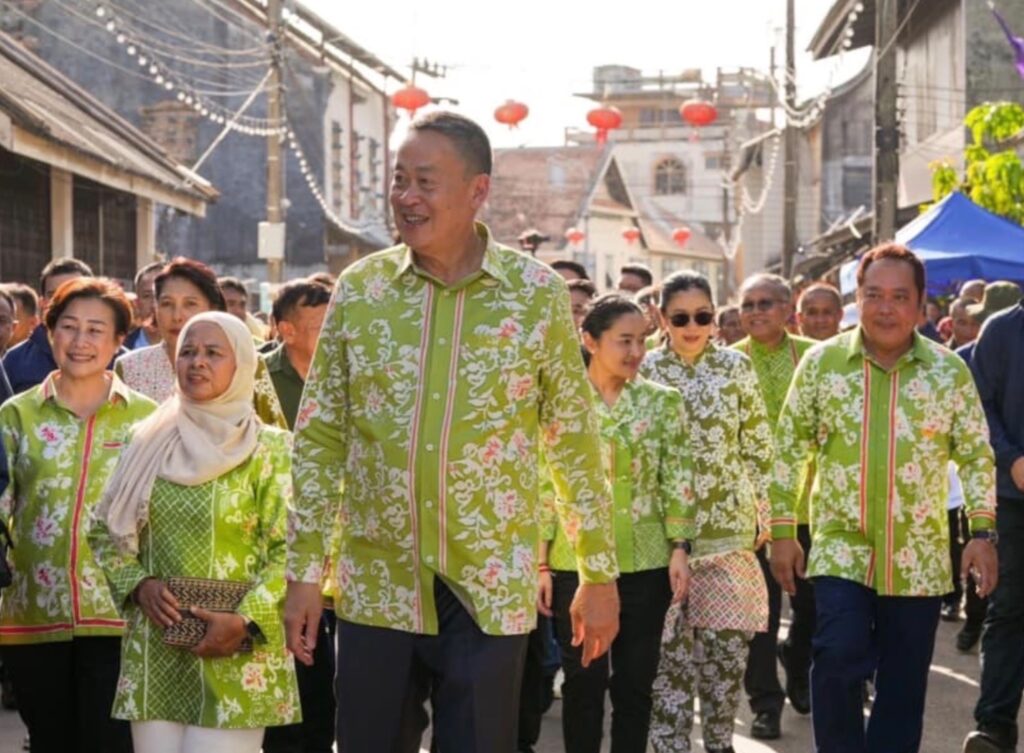
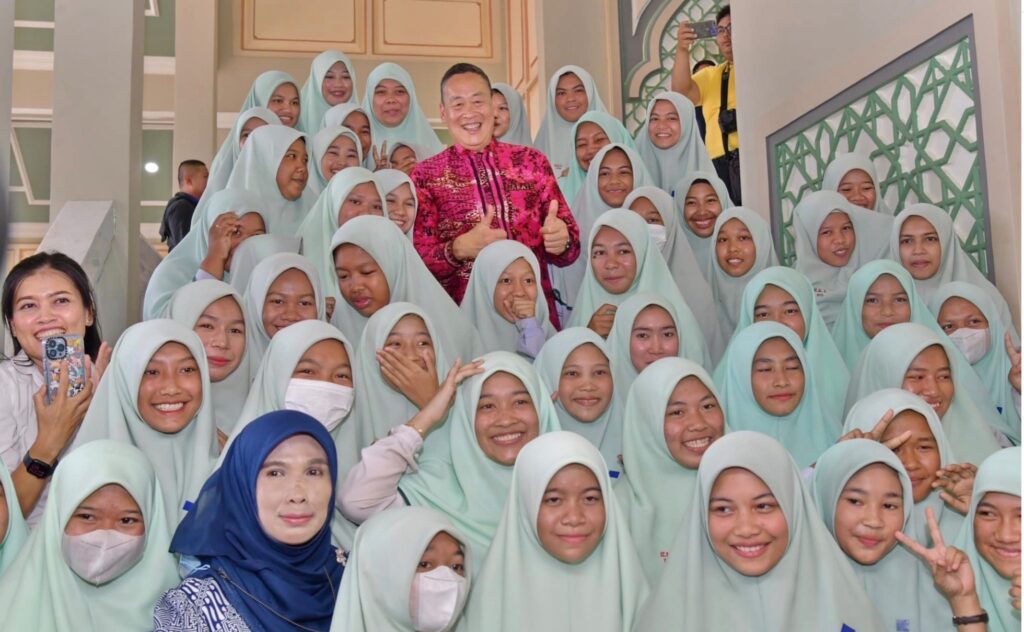
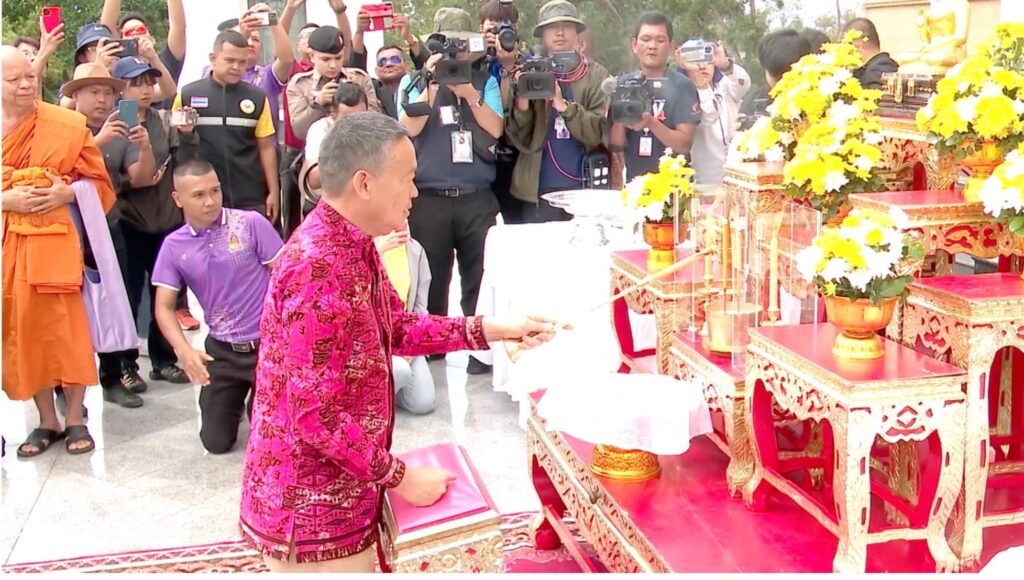
In repeated comments everywhere, the Prime Minister made clear why he devoted three days touring South Thailand. To paraphrase: South Thailand is home to a confluence of Islamic, Chinese and Buddhist cultures and cuisines. Combined with the natural beauty, it is perfect for tourism promotion as a conduit for economic prosperity and job creation for the emerging generation.
Simultaneously, he pledged that his government will make every effort to seriously solve the underlying social, cultural and ethnic tensions. He said at one of his stops: “Over the past year, the problems of unrest have greatly decreased. This government has cancelled the Immigration 6 form for inbound visitors from Malaysia, leading to the number tripling from 10,000 people on average over a weekend to over 30,000. That will promote tourism and sale of goods, bringing in more income for the local people. When people have money in their pockets, they will forget about their conflicts. I hope that this will be a starting point for many good things in the future.”
As a businessman, he saw opportunities everywhere, starting with infrastructure and facilitation. He said cross-border travel with Malaysia would be facilitated via improved procedures at the customs and Immigration checkpoints, upgraded highways and airports.
In Pattani, local communities asked for support to set up a museum and marketing help for their local products and handicrafts. After sampling local street-food, especially Halal food made by women entrepreneurs, he said the government will push for the establishment of a Halal industrial center and make Thailand the ‘World Halal Kitchen’. He heard stories about local brassware-making traditions fading due to the ageing of the artisans and said he would talk to the the Ministry of Culture to see how it could be preserved and revived.
He tried local desserts and asked if some of the dishes could be included on the menus of Thai Airways’ Business Class. He visited TK (Thailand Knowledge) Park and offered to help commercialise the ideas and inventions. After visiting the Chinese temple, he said the festival of Goddess Lim Ko Niao could be promoted similar to the Phuket Vegetarian Festival. He visited Ban Khun Phithak Raya, a 170-year-old residence still in its original condition, and said it would be worth converting into a documentary history.
The Prime Minister admitted that his visits to the Krue Se Mosque and Pattani Central mosque were the first time he had entered a mosque. “I was impressed by the smiles and goodwill that the citizens welcomed me with. I saw peace and serenity in the eyes of all. I saw the beauty of the Pattani Central Mosque which was built a very long time ago. Let it be a tourist attraction not just for visits but also to promote (interfaith) discussions among religious leaders as well.” At the Islamic Cultural Heritage Museum and Quran Learning Center, the Prime Minister had his name inscribed in Arabic calligraphy and was presented with a hand-painted portrait.
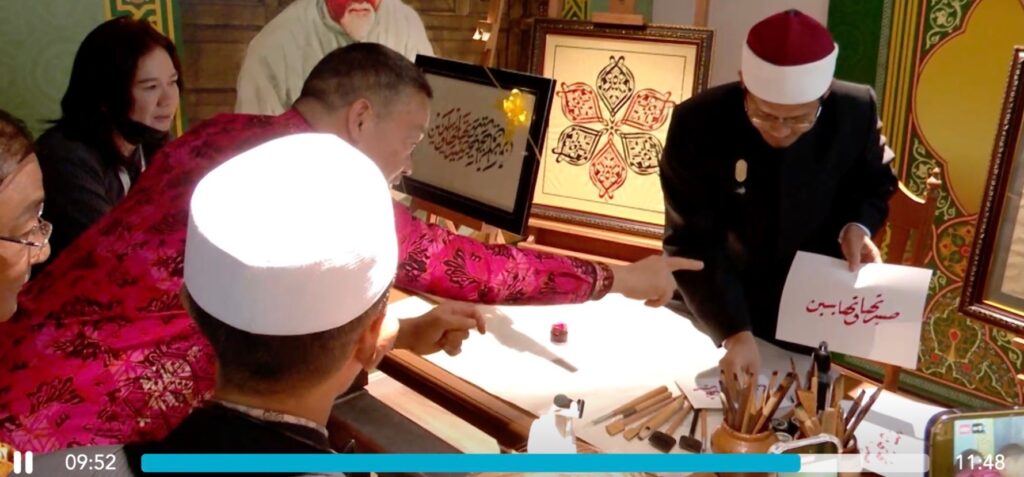
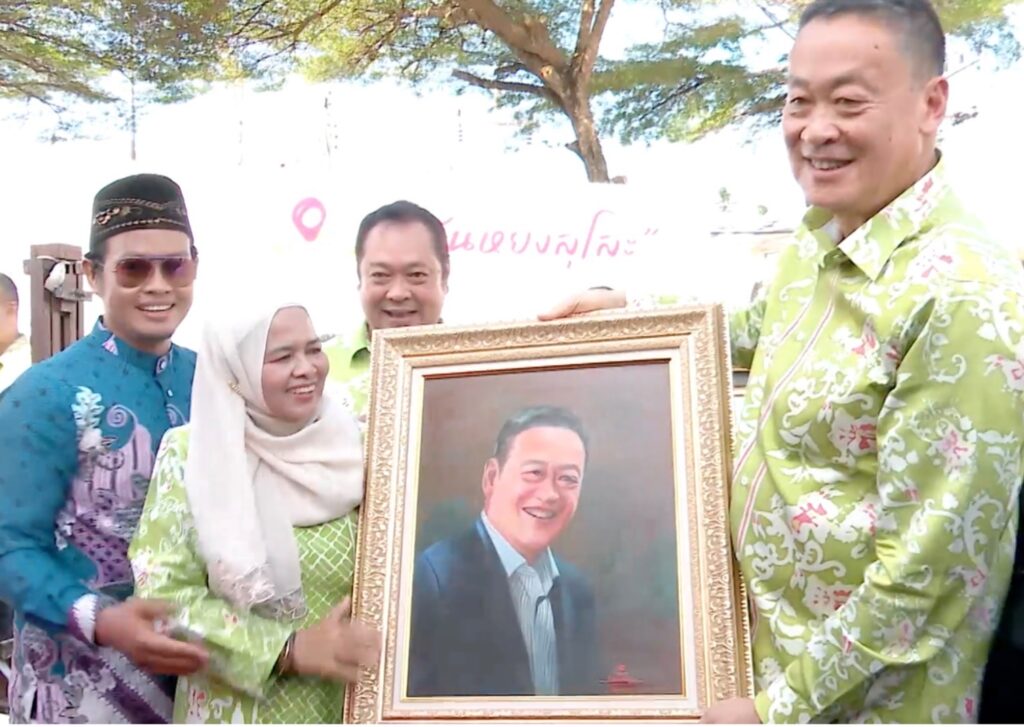
His entourage played the part too. At the mosque visits, both the Minister of Tourism and the TAT Governor respectfully donned the hijab (below). The Governor, Mrs Thapanee, filed a series of daily updates on her popular social media platforms. Right after the visit, the TAT published a sample tour itinerary for all three provinces.
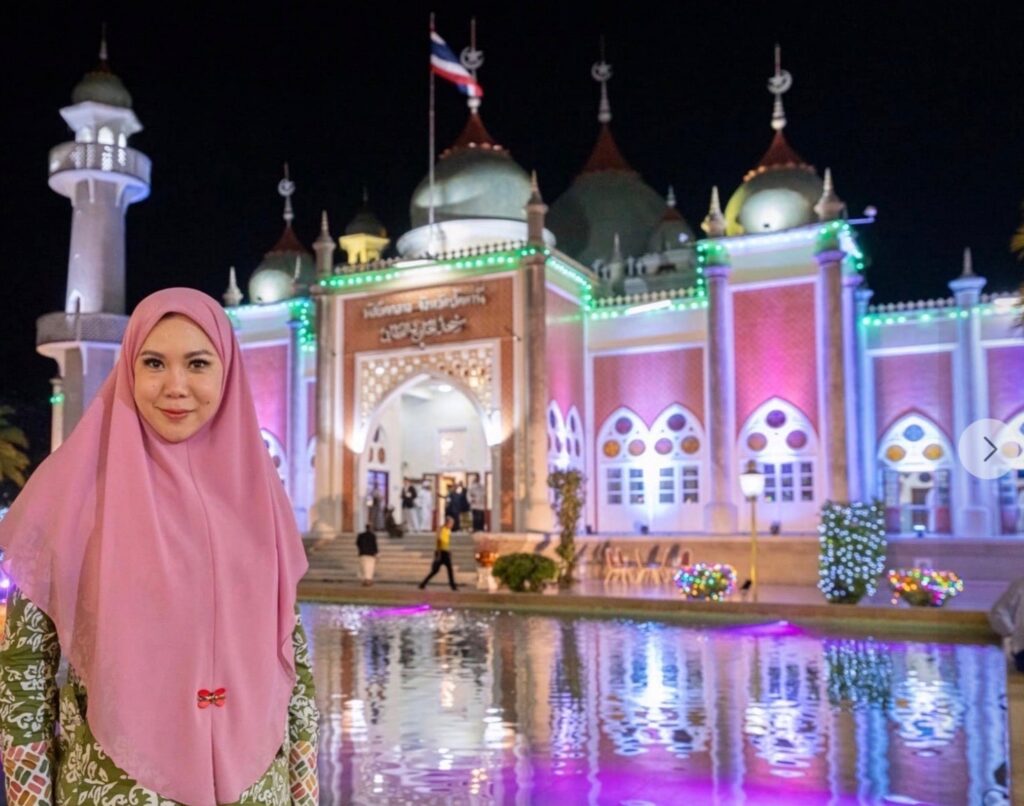
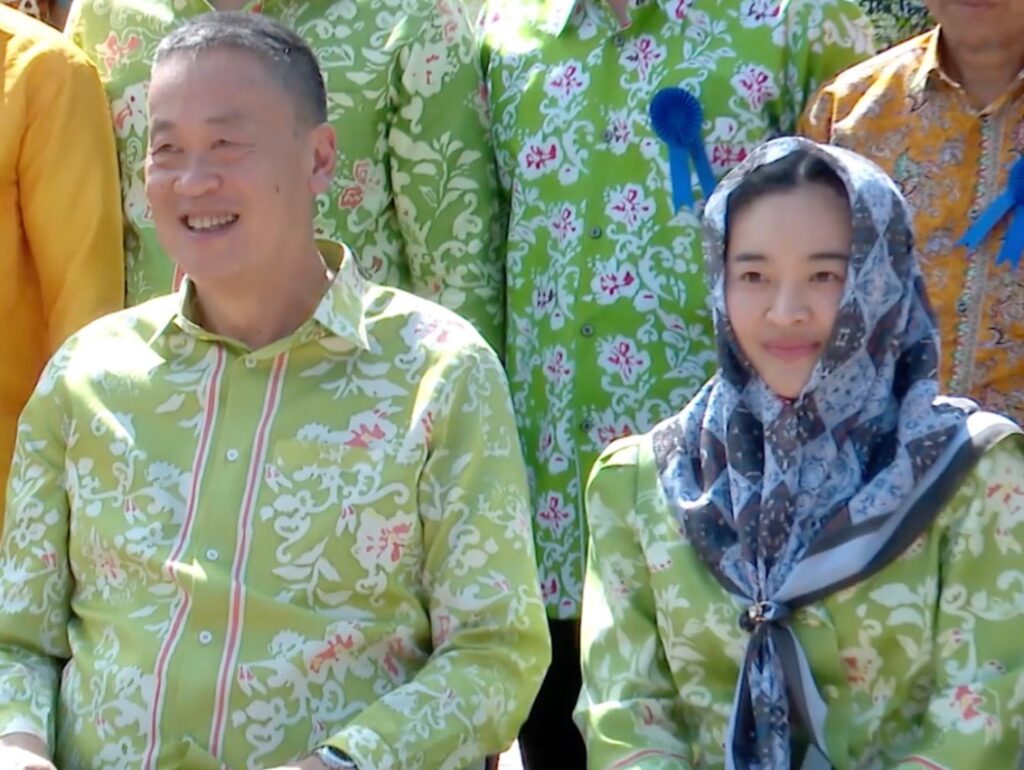
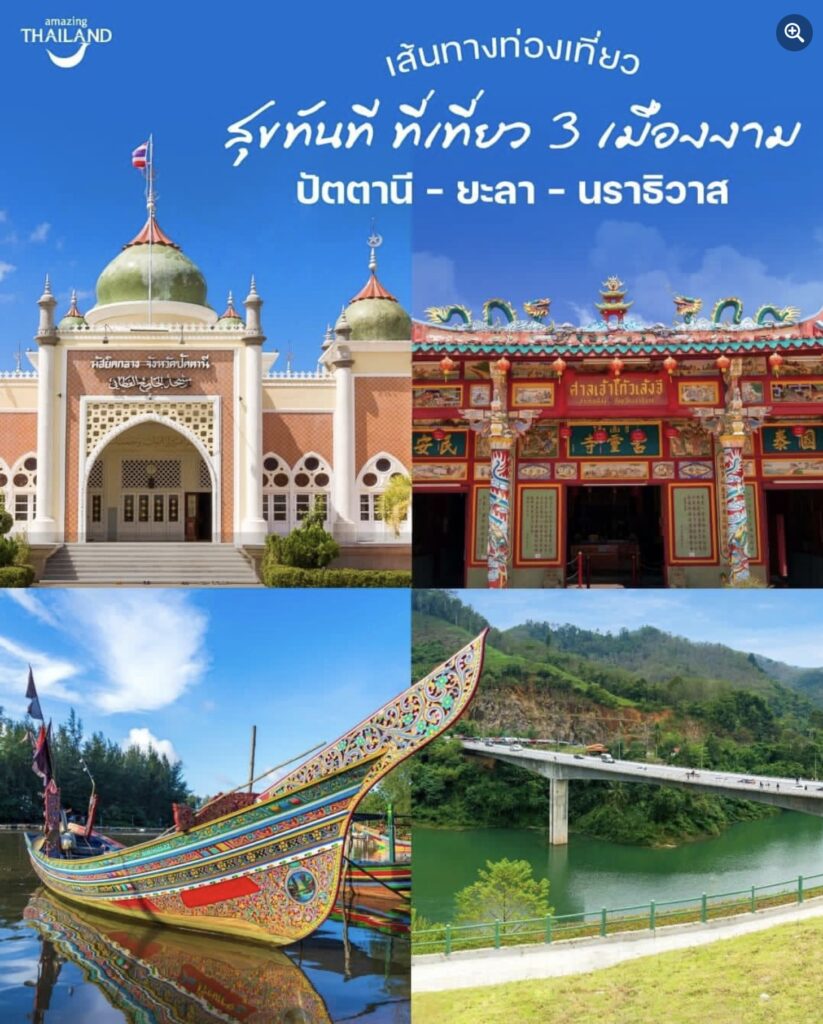
In terms of deliverables, the visit ticked off all the boxes on a checklist of national, sub-regional, regional and global objectives.
The provinces of Pattani, Yala and Narathiwat are located in one of the most geostrategic parts of Asia. Resolving conflicts there is critical to the future of Thailand, ASEAN and Asia as a whole.
Tourism is no longer just a economic driver for Thailand but a source of national security. Over the years, Thailand has learned that man-made conflict is the leading cause of peace-disrupting crises. Precisely because it is man-made, conflict can be both resolved and prevented. Here, Thailand has at least one bright spot. In the 1980s, Northeast Thailand was a hotbed of communist insurgency and the country’s most impoverished region. Today, Northeast Thailand is an important geostrategic bridgehead with the neighbouring countries of the Greater Mekong Subregion, especially Laos and Cambodia.
Similarly, South Thailand is a major bridgehead for connectivity with the entire Southern part of ASEAN, via neighbouring Malaysia and onwards to Singapore over land. If maritime borders are included, peace in South Thailand facilitates trade, transport and tourism between the Indonesia-Malaysia-Thailand Growth Triangle and the entire BIMST-EC (Bangladesh, India, Malaysia, Sri Lanka Thailand Economic Cooperation) regions.
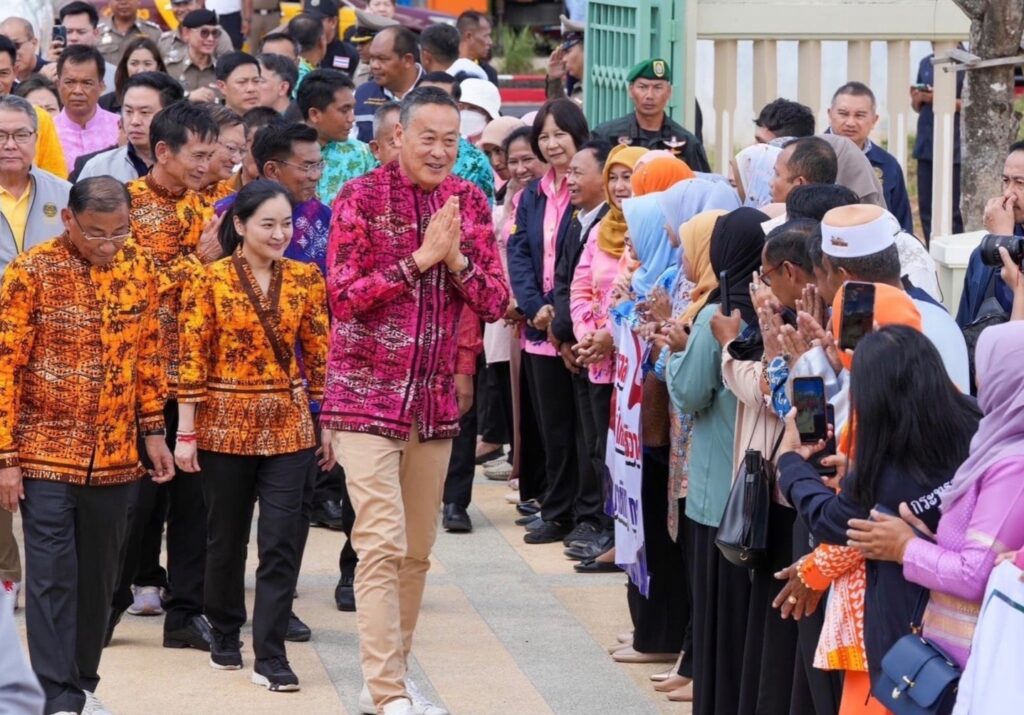
The visit is also a follow-up to the diplomatic patch-up with Saudi Arabia last January 2022, after a 32-year rift caused by Thai violence and crime against Saudi diplomats, businessman and members of the Saudi Royal Family. Now, Saudi investors are looking for places in Asia to park their funds, making the Muslim-majority Thai provinces a natural magnet. It also improves Thailand’s standing in the Organisation of Islamic Countries (where it has observer status), as well as potentially the Thai ranking in the Global Muslim Travel Index. That, in turn, will attract more visitors from the Islamic world.
Finally, it meets all the UN Sustainable Development Goals. In an era when VUCA (Volatility, Uncertainty, Conflict and Ambiguity) has become the New Normal, it sends a clear message to countries like Myanmar and India, where anti-Muslim bigotry is institutionalised, that building inclusivity and respecting minorities is a far more beneficial and positive contributor to nation-building. Thailand is showing the way.
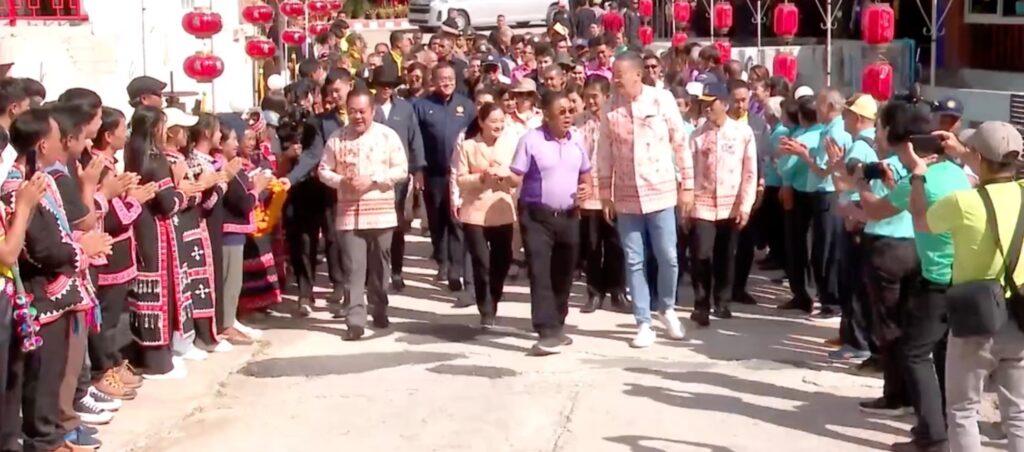
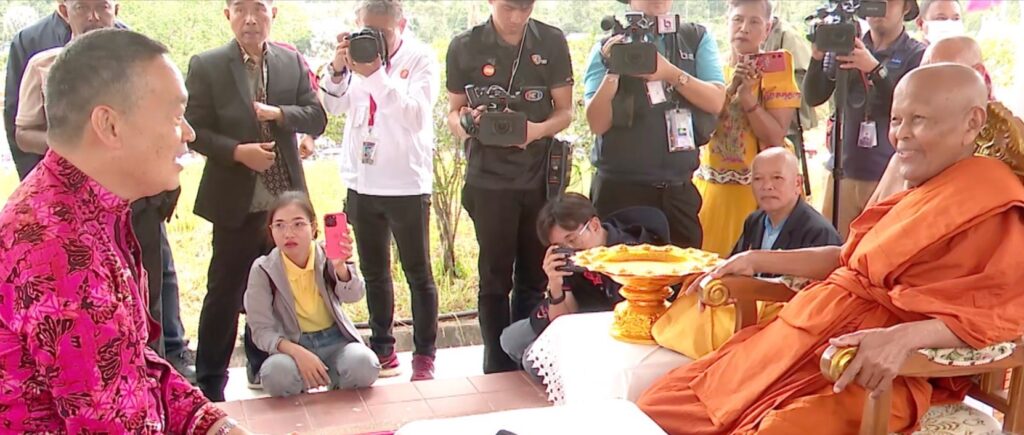
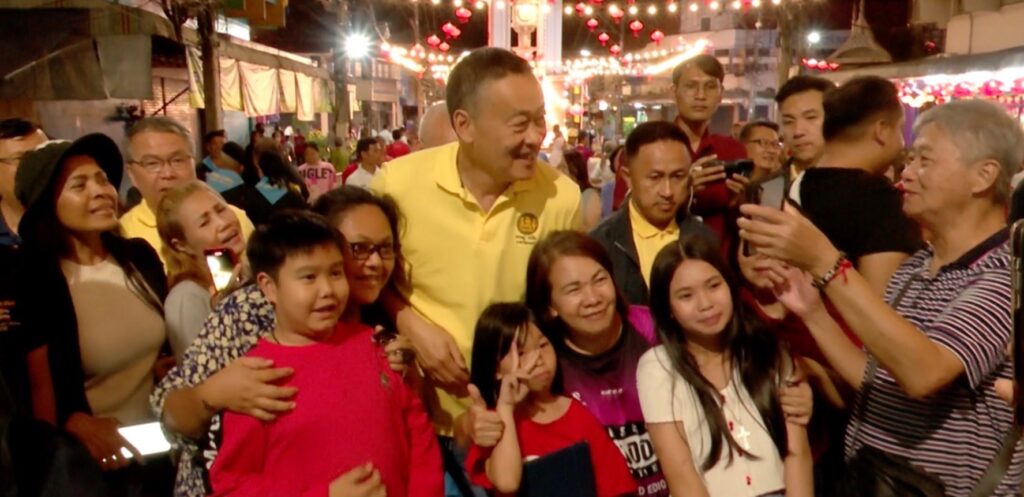
It would be easy to cynically dismiss the visit as a political stunt designed to bolster the fortunes of a Prime Minister who is widely perceived to be a stand-in surrogate for the real head of the Phuea Thai party, Thaksin Shinawatra. It could also be dismissed as an attempt to bolster support for the Phuea Thai party in South Thailand. That hidden agenda may be lurking in the background but it was obscured by the positive outcomes. The Prime Minister delivered on his mandate and did what he is paid to do.
Now comes the hard part — managing the imminent Gold Rush.
South Thailand today is very much what other coastal tourism destinations like Phuket and Samui were like in the 1980s. Thailand does not have a good track record in managing its destinations well. This deficiency assumes a broader importance in South Thailand, where environmental care will be an adjunct to managing the delicate socio-cultural relations. New systems and channels of governance and communications may need to be set up to ensure that one set of problems does not get replaced by another. The area is still a flammable tinder-box. Investors rushing to cash-in via land-grabs will need to be very careful not to disrupt the peace by negative business practises, such as corruption and exploitation.
In the years ahead, what happens next case will become a good pilot test-case for serious students of the management and development of tourism, and its role in preserving the peace, underpinning national security and contributing to the UN Sustainable Development Goals.
The visit also highlighted clear gaps in the way the situation in South Thailand is covered by the global media and the foreign diplomatic community. It went off without a hitch, and thus received zero global coverage in mainstream media. Had a security-related incident or attack occurred, the media would have been there in force and the foreign diplomatic community would have been churning out the travel advisories thick and fast.
Here are links to the detailed videos of the visit (in Thai):
https://www.thaigov.go.th/vdo/contents/index
Here are links to the suggested tour itineraries of Pattani, Yala and Narathiwat prepared by the TAT (in Thai).
https://api.tourismthailand.org/…/content…/128-28094.pdf



Liked this article? Share it!